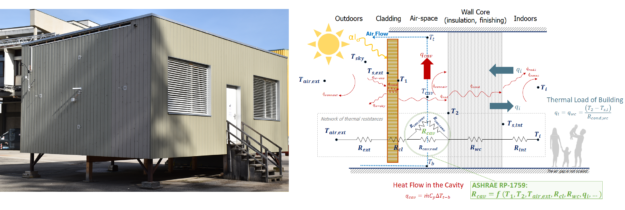Smart Living Lunch
Join our next Smart Living Lunch online on March 10th 2021 from 11:00 to 12:00. Mohammad Rahiminejad (TEBEL, EPFL) will talk about the impact of air-flow on thermal performance of air-spaces behind cladding (Ashrae 1759-RP). Zoom link upon registration.
It is estimated that nowadays buildings account for approximately 40% of the total energy consumption and they are responsible for approximately 36% of CO2 emissions. The introduction of wall designs that incorporate airspaces behind claddings for thermal resistance in energy design guides can reduce energy use by buildings and boost the thermal efficiency of dwellings.
The project ASHRAE 1759-RP addresses the impact of the ventilated cavity behind external claddings on the thermal performance of the wall structure by defining “effective thermal resistance” of air gaps based on the linearized network of thermal resistances that is the basis for building components energy code compliance applications. The magnitude of the impact significantly depends on conditions such as air flow rate, air temperature, and incident solar flux. Even for steady-state and no solar conditions, the air space could be able to resist the heat flow even more than certain wall components. For certain air change rate values, ventilation air flow in the air cavity effectively off-sets or diminishes the thermal resistance contribution of the cladding to the overall wall assembly, and the cladding thermal resistance no longer fully contributes to the simple linearized network of thermal resistances.
The project provides suggestions to improve thermal design accuracy to support code-compliant use of the ventilated air spaces by accounting for the thermo-hydrodynamic behavior of the airflow, and it provides recommendations to modify the ASTM C1363-19 test method to incorporate and study air flow-related effects considering possible uncertainty of measurement.
SMART LIVING LUNCH | Thermal performance of air-spaces behind cladding Online | 11:00-12:00
Contact

mohammad rahiminejad
Information

